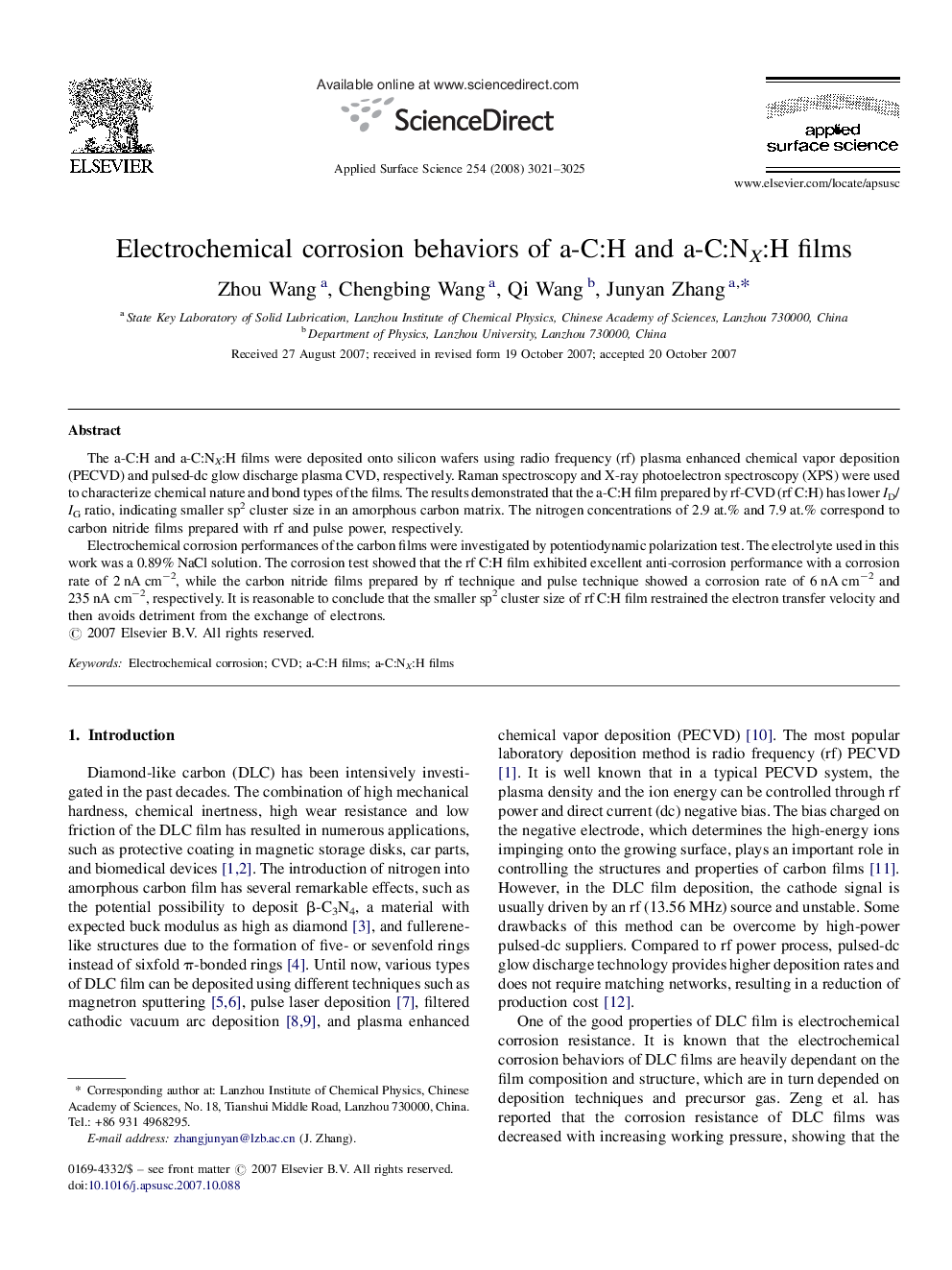| Article ID | Journal | Published Year | Pages | File Type |
|---|---|---|---|---|
| 5365335 | Applied Surface Science | 2008 | 5 Pages |
The a-C:H and a-C:NX:H films were deposited onto silicon wafers using radio frequency (rf) plasma enhanced chemical vapor deposition (PECVD) and pulsed-dc glow discharge plasma CVD, respectively. Raman spectroscopy and X-ray photoelectron spectroscopy (XPS) were used to characterize chemical nature and bond types of the films. The results demonstrated that the a-C:H film prepared by rf-CVD (rf C:H) has lower ID/IG ratio, indicating smaller sp2 cluster size in an amorphous carbon matrix. The nitrogen concentrations of 2.9Â at.% and 7.9Â at.% correspond to carbon nitride films prepared with rf and pulse power, respectively.Electrochemical corrosion performances of the carbon films were investigated by potentiodynamic polarization test. The electrolyte used in this work was a 0.89% NaCl solution. The corrosion test showed that the rf C:H film exhibited excellent anti-corrosion performance with a corrosion rate of 2Â nAÂ cmâ2, while the carbon nitride films prepared by rf technique and pulse technique showed a corrosion rate of 6Â nAÂ cmâ2 and 235Â nAÂ cmâ2, respectively. It is reasonable to conclude that the smaller sp2 cluster size of rf C:H film restrained the electron transfer velocity and then avoids detriment from the exchange of electrons.
